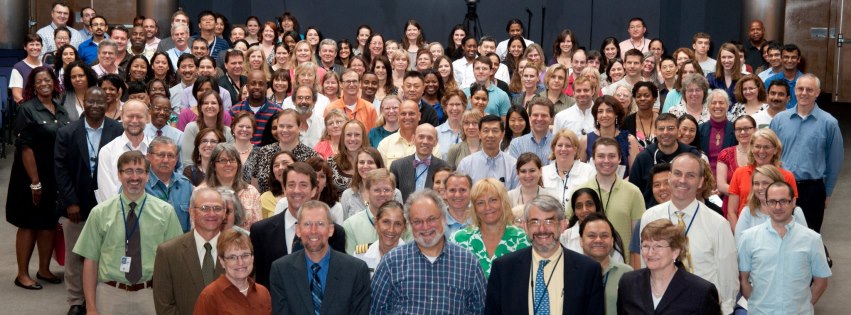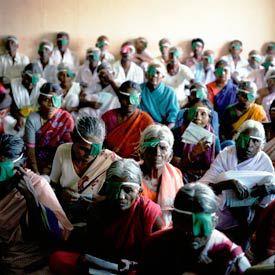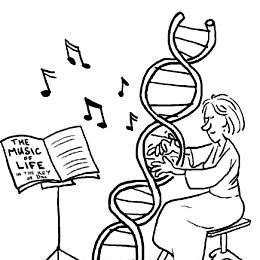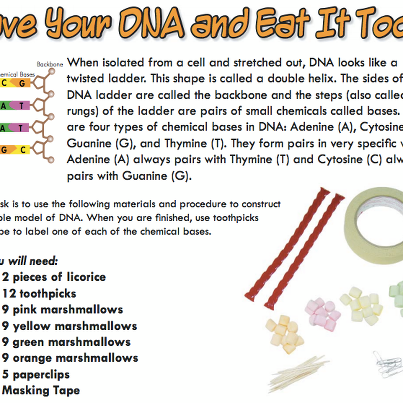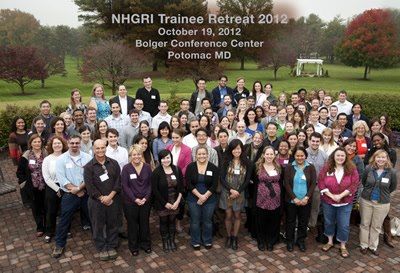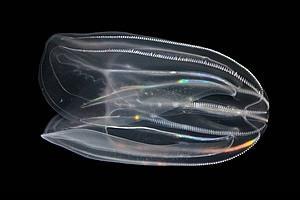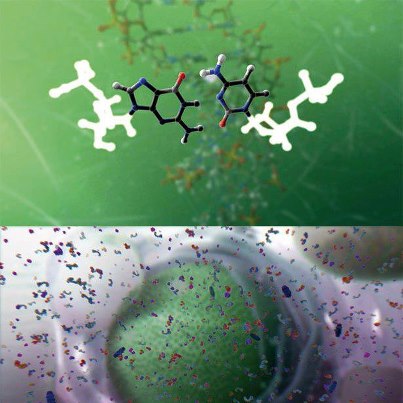- The National Institutes of Health wants you to stay healthy! Learn how to care for loved ones with the flu, including people at high risk (children, seniors, and people with chronic conditions). Visit www.flu.gov for more information.
- Researchers funded by the National Eye Institute (NEI) found that curcumin, the active ingredient in the spice turmeric, may successfully treat some forms of retinitis pigmentosa, a group of eye diseases caused by genetic mutations that lead to severe vision loss and blindness.http://qoo.ly/5p2s
Photo by Chris de Bode/WHO - RecommendationsSee All
 Arthur Kyriaziswhat an amazing resourceabout 11 months ago
Arthur Kyriaziswhat an amazing resourceabout 11 months ago Carol LampkinThe human genome and research surrounding it holds boundless potential and all should be involved, in one way or another. Please support the National Human Genome Research Institute, for a future full of possibilities!over a year ago
Carol LampkinThe human genome and research surrounding it holds boundless potential and all should be involved, in one way or another. Please support the National Human Genome Research Institute, for a future full of possibilities!over a year ago
- For nearly 2,000 years, traders used a 4,000-mile network linking the Far East with Europe to exchange goods, culture and, in the case of the Behcet's disease, genes. Read about researchers' new insights into this painful disease http://qoo.ly/5phz
- LikesSee All
- SACNAS Advancing Hispanics/Chicanos & Native Americans in ScienceNon-Profit Organization
- Sanford-Burnham Medical Research InstituteEducational Organization · Medical Research
- ACMG - American College of Medical Genetics and GenomicsNon-Profit Organization
- APhA - American Pharmacists AssociationOrganization · Medical & Health
- NIH researchers have discovered a defect in DNA replication that can lead to cancer. Check out the cool animation at the end of the story thanks to Howard Hughes Medical Institute. http://qoo.ly/5p48
Photo: Asterisks highlight solid green PCNA protein that accumulates in cells with a lack of the enzyme ATAD5. The accumulation of protein occurs during stalled DNA replication. - Cool article on the Hospital Microbiome Project quoting Lita Proctor, Ph.D., NHGRI's program director of the Human Microbiome Project http://qoo.ly/5nz5
- Happy 2013 from your friends at the National Human Genome Research Institute!
- Check out the new GenomeTV video on the Genetics of Parkinson's Disease. Ellen Sidransky, M.D., from NHGRI's Medical Genetics Branch, explains how studies of rare diseases provide an important window into common complex disorders. http://qoo.ly/5my5
- Delicious DNA anyone? With thanks to the University of Utah! Instructions are at http://qoo.ly/5mx2
- Local to the DC area? Join us Jan. 4 for a lecture by Kenneth Fischbeck, M.D., on how the identification of hereditary neuromuscular disease genes has brought accurate diagnostic testing and opportunities for developing treatment. Learn more at http://qoo.ly/5mu7
- Early career scientists in the National Human Genome Research Institute intramural training program (NHGRI) say that their biggest concern is a challenging job market and what lies ahead for them after their time at NHGRI. Read more at http://qoo.ly/5m9r
- Bioluminescent sea creatures that emit and detect light are providing clues to the evolution of sight and may, in time, shed light on our understanding of eye diseases. Read about this new study from NHGRI's Genome Technology Branch: http://qoo.ly/5ka2
- Check out the twisting tale of DNA by Judith Hauck -- with thanks to the folks at TEDEducation.
http://youtu.be/0_b80fHmuWw - From our friends at NIH Research Matters, here's a story about how genomic technology detects fetal problems. The new approach might help spot abnormalities that conventional methods can't and allow for better planning for early interventions and prevention of stillbirth. More: http://go.usa.gov/gpTm
- In November, researchers from around the world published studies evaluating the potential of genomics to improve our diets. So, in the spirit of the holiday feasts, this Genome Advance of the Month focuses on articles that ask, "What's for dinner?" http://qoo.ly/5j8k
- ActivityJanuaryPeople Who Like ThisVisits1141
